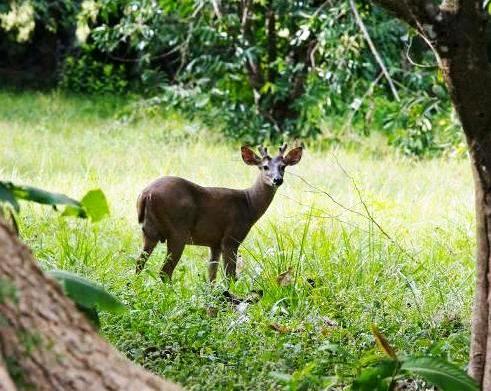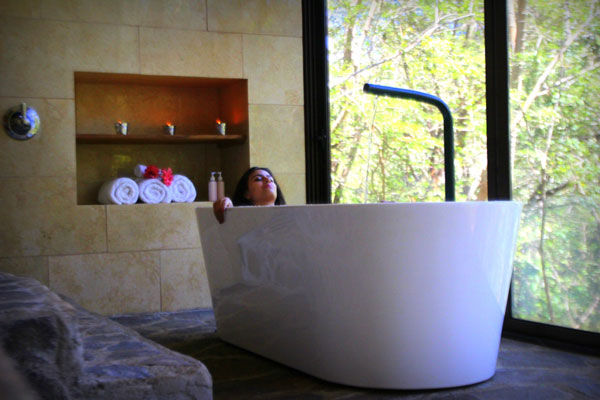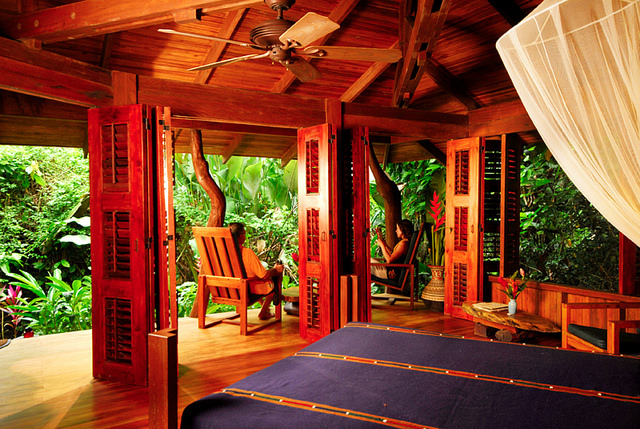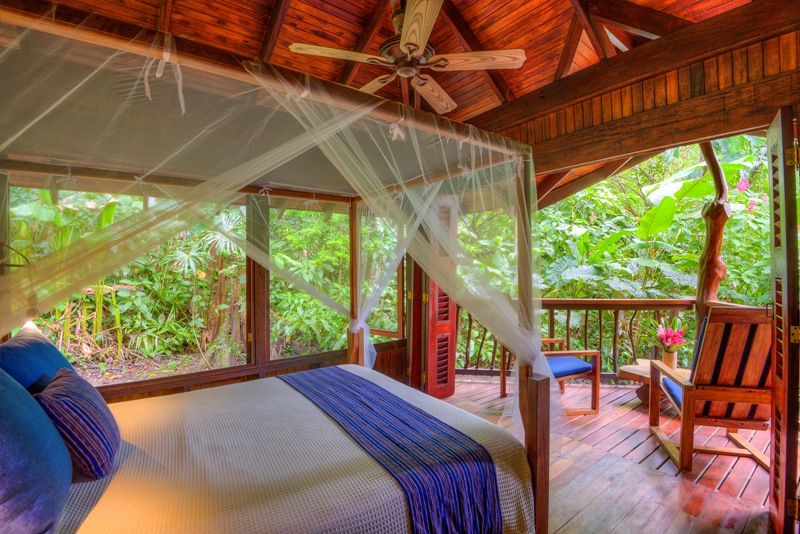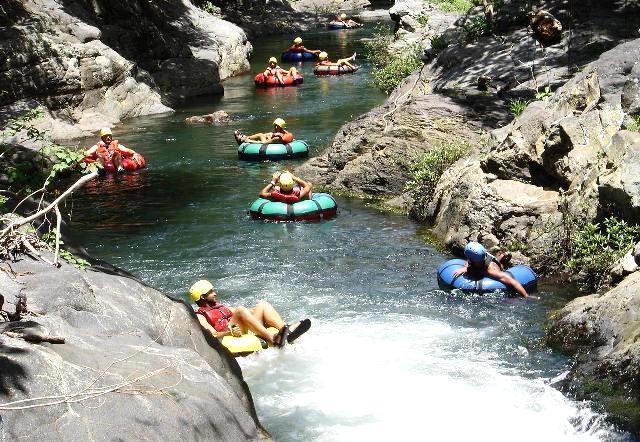When I used to guide nature tours in Costa Rica, people would always ask me, “Are we going to see monkeys (or a sloth, toucan, etc.)?” I would always respond, “Well, it’s possible, but not guaranteed; it’s not like we put the animals out in their positions in the morning!”
 When we talk about the Curú Wildlife Refuge, however, it actually almost is guaranteed to see a wide variety of wildlife. The Curú Wildlife Refuge protects tropical dry forests, beach, and mangrove estuaries and rivers on Costa Rica’s southern Nicoya Peninsula, near Paquera and Tambor. Curú is privately owned and part of a large farm that combines sustainable agriculture and forest management with the protection of wildlife and nature. For eco-tourists, the Curú Wildlife Refuge is a highlight attraction of the Nicoya Peninsula.
When we talk about the Curú Wildlife Refuge, however, it actually almost is guaranteed to see a wide variety of wildlife. The Curú Wildlife Refuge protects tropical dry forests, beach, and mangrove estuaries and rivers on Costa Rica’s southern Nicoya Peninsula, near Paquera and Tambor. Curú is privately owned and part of a large farm that combines sustainable agriculture and forest management with the protection of wildlife and nature. For eco-tourists, the Curú Wildlife Refuge is a highlight attraction of the Nicoya Peninsula.
 The Curú Wildlife Refuge is one of the smallest sanctuaries in Costa Rica, with only 84 hectares (207 acres). Despite its small size, Curú is home to a rich and diverse wildlife population spread over five ecological habitats, ranging from tropical dry and moist forest to mangrove swamps and marine habitats. Part of the reason for its high biodiversity is that the protected forest of Curú connects to the Biological Wildlife Corridor of the Nicoya Peninsula. As you drive from Paquera to Tambor, you will pass through a heavily forested part with giant trees; this broad strip of forest allows animals to migrate between Curú and the peninsula’s mountainous interiors. (Drive slowly and watch out for animals on the road!)
The Curú Wildlife Refuge is one of the smallest sanctuaries in Costa Rica, with only 84 hectares (207 acres). Despite its small size, Curú is home to a rich and diverse wildlife population spread over five ecological habitats, ranging from tropical dry and moist forest to mangrove swamps and marine habitats. Part of the reason for its high biodiversity is that the protected forest of Curú connects to the Biological Wildlife Corridor of the Nicoya Peninsula. As you drive from Paquera to Tambor, you will pass through a heavily forested part with giant trees; this broad strip of forest allows animals to migrate between Curú and the peninsula’s mountainous interiors. (Drive slowly and watch out for animals on the road!)
 The Curú Wildlife Refuge is considered one of the best places in Costa Rica to observe wildlife. In this area live more than 232 bird species, 78 kinds of mammals, 87 types of reptiles, 25 amphibian species, and 500 different plants. The most common bird species are Motmots, White-fronted Amazons, Laughing Hawks, woodpeckers and herons; Scarlet macaws have successfully been reintroduced in the area and can often be seen in the mornings or the late afternoons. Mammals you might see include White-faced monkeys, Howler monkeys, Spider monkeys, White-tailed deer, Collared Peccaries, Coatis, Raccoons, Coyotes, Anteaters, Otters, Pumas and Ocelots. Iguanas are everywhere. On the beach, Olive Ridley, Hawksbill and Green sea turtles lay their eggs.
The Curú Wildlife Refuge is considered one of the best places in Costa Rica to observe wildlife. In this area live more than 232 bird species, 78 kinds of mammals, 87 types of reptiles, 25 amphibian species, and 500 different plants. The most common bird species are Motmots, White-fronted Amazons, Laughing Hawks, woodpeckers and herons; Scarlet macaws have successfully been reintroduced in the area and can often be seen in the mornings or the late afternoons. Mammals you might see include White-faced monkeys, Howler monkeys, Spider monkeys, White-tailed deer, Collared Peccaries, Coatis, Raccoons, Coyotes, Anteaters, Otters, Pumas and Ocelots. Iguanas are everywhere. On the beach, Olive Ridley, Hawksbill and Green sea turtles lay their eggs.
 The habitat of the mangroves swamps is one of the more fascinating ecosystems. An immense number of small organisms live in the nutrient-rich mud of these swamps, which attract many species of fish and flocks of water birds to feed. All five of Costa Rica’s mangrove species are represented in Curú.
The habitat of the mangroves swamps is one of the more fascinating ecosystems. An immense number of small organisms live in the nutrient-rich mud of these swamps, which attract many species of fish and flocks of water birds to feed. All five of Costa Rica’s mangrove species are represented in Curú.
Over the past 80 years, the Schutt-Valle family has managed the Curú land. The area has become an important ecotourism location and research center for students and scientists. Federico Schutt de la Croix purchased the land in 1933 from the Pacific Lumber Company that logged the area for valuable tropical trees. The area was then used as a sustainable development project with selective timber harvesting, agriculture and cattle grazing. The  three children of Federico and his wife, Doña Julieta Schutt de Valle, all work in animal conservation and sustainable activities like small mango and teak plantations. The family’s land covers 1,496 hectares (3,697 acres); 1,100 hectares (2,718 acres) are protected forest (75%), 312 hectares (771 acres) are for grazing and agriculture (20%), and 84 hectares (207 acres) contain the Curú National Wildlife Refuge (5%). The Curú National Wildlife Refuge was officially created in 1983.
three children of Federico and his wife, Doña Julieta Schutt de Valle, all work in animal conservation and sustainable activities like small mango and teak plantations. The family’s land covers 1,496 hectares (3,697 acres); 1,100 hectares (2,718 acres) are protected forest (75%), 312 hectares (771 acres) are for grazing and agriculture (20%), and 84 hectares (207 acres) contain the Curú National Wildlife Refuge (5%). The Curú National Wildlife Refuge was officially created in 1983.
The entrance to Curú is 6 km after Paquera and 16 km before Tambor. There are several trails within the Refuge, including short, easy trails and long, difficult trails that can take several hours to complete. Curú is open daily from 7 a.m. – 3 p.m. Entrance is $10 per person per day.
 Visit the Curú Wildlife Refuge when you stay at Vista Las Islas Hotel & Spa in Paquera. This exotic tropical getaway features 18 rooms with private balcony terraces and ocean views of the Nicoya Gulf and famed Tortuga Island. The boutique luxury hotel can arrange tours to Curú, boat tours to Tortuga Island for snorkeling or scuba diving, kayaking and sport fishing. The hotel is conveniently located just a short drive away from the Paquera ferry terminal.
Visit the Curú Wildlife Refuge when you stay at Vista Las Islas Hotel & Spa in Paquera. This exotic tropical getaway features 18 rooms with private balcony terraces and ocean views of the Nicoya Gulf and famed Tortuga Island. The boutique luxury hotel can arrange tours to Curú, boat tours to Tortuga Island for snorkeling or scuba diving, kayaking and sport fishing. The hotel is conveniently located just a short drive away from the Paquera ferry terminal.
By Shannon Farley



